Back to Menu
One of Sri Lanka’s leading city’s and the capital of not just the Anuradhapura district but also the entire North Central Province, Anuradhapura is a cultural treasure chest. It was one of Sri Lanka’s major capitals back when Kings ruled the island. Anuradhapura was the third capital of the Rajarata kingdom, preceded by Tambapanni and Upatissa Nuwara. Its well-preserved ruins boast about the culturally vibrant Sinhala Civilization. With all of these privileges along with being the hub of Theravada Buddhism for centuries, the city is regarded as a World Heritage Site. Head 20 kilometres north of Sri Lanka’s capital city Colombo to set foot on one of Sri Lanka’s eight World Heritage Sites. Are you prepared to witness one of the island’s oldest inhabited cities?

179 km or 3 ½ to 4 hour’s drive
Colombo – Puttalam - Anuradhapura Highway – with traffic
Colombo – Jaffna Express train – 5 hours
Walk in to Colombo fort railway station and you can get tickets for 3rd class and 2nd class. (3rd class railway tickets price is very cheap)
3rd class is very crowded sometimes not recommended for tourists.
To pre-book a rail journey contact a travel agency
For more information, log in to – http://www.railway.gov.lk/web
Colombo – anuradhapura – 30 mins
The following travel companies that are mentioned offers localized chartered flights and Helicopter tours :
https://www.senoksl.com/travel-and-leisure/airport-and-aviation-services-sri-lanka.html

Sacred Bodhi Tree (also known as King Parakrama's Sea or the Sea of King Parakrama) is a shallow reservoir (wewa) located in anuradhapura, Sri Lanka. It is made up of five different wewa (reservoirs) (thopa, dumbutulu, erabadu, bhu, kalahagala tanks) connected by a narrow channel of streams.
Built around 386 AD, the northernmost reservoir is known as Topa wewa (Sinhalese wewa is almost identical to the English word lake or reservoir, but used in a unique Sri Lankan technique). The reservoir was expanded and the centre section is also known as Eramudu wewa, was added during the reign of King Parâkramabâhu I, while the southernmost section, Dumbutula wewa, was constructed during his reign. The statement "do not allow even a drop of rainfall in this land go to the sea without use" inspired the construction of this wewa (reservoir). The wewa (reservoir) was so vast that it was given the name samudhraya (ocean), but there was another reason for it, we know that waves erupt in tanks, but the Sarakrama Samudhraya was so huge that the waves were identical to ocean waves.
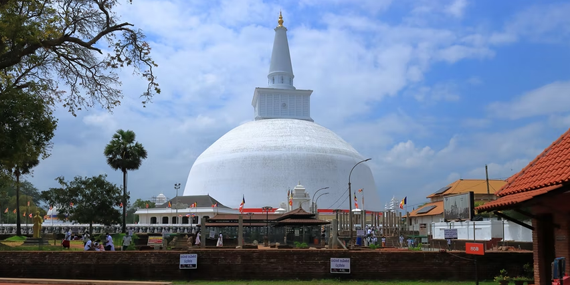

The Ruwanweli Maha Seya, also known as the Maha stupa (the great stupa) in Anuradhapura, Sri Lanka. Two quarts or one Dona of the Buddha's relics are enshrined in the stupa, making it the largest collection of Buddha’s relics anywhere.
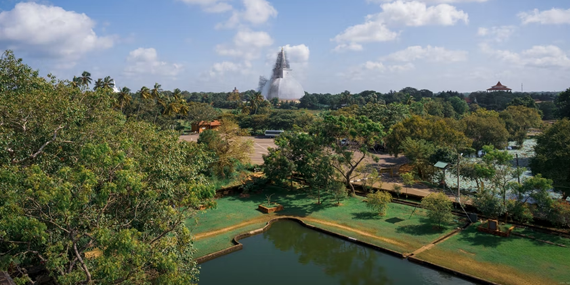

A Buddhist temple located near Anuradhapura's Tissa Wewa,Isurumuniya has four carvings that are popular. The paintings include those of The Royal Family, the Isurumuniya Lovers and the Elephant pond.

Also known as the Lohaprasadaya, this structure is located between Anuradhapura's Sri Mahabodiya and Ruwanweliseya. It was named the Brazen palace due to the bronze tiles that adorn the roof. Back in the days, the building consisted of a refectory, an Uposatha house(uposathagara) and a Simamalake that was the assembly point for the Sangha's on poya days. Built by King Dutugemunu, it was a structure that was nine stories high with one side of the building extending at 400 ft (120m) in length. Each of the 40 rows includes 40 stone pillars, making it a total of 1600 pillars. There are rumours that the Lovamahapaya was decorated with precious stones and corals. It is also believed that the plan was brought down from the heavens and took 6 years to complete. Unfortunately, the structure was destroyed during the rule of King Saddhatissa.
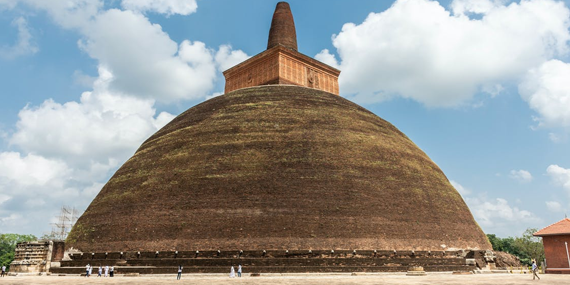

Situated in the UNESCO world heritage city of Anuradhapura, the Jetavanaramaya or Jetavanarama stupa is a Buddhist reliquary monument. Standing 400 ft from the ground, the stupa was the world's third-largest when it was built during the rule of King Mahasena. The stupa's construction was initiated during his rule and was completed by his son Maghavanna I. It was renovated further by King Parakramabahu l of anuradhapura. The relic that is displayed in the stupa is believed to be a part of the belt that was tied by Buddha.

The Samadhi Buddha is a famous statue situated at Mahamevnāwa Park in Anuradhapura, Sri Lanka. This statue is 7 feet 3 inches in height and carved from dolomite marble. It lays in the Dhanya Mudra position which is regarded as the meditational posture linked to Buddha's first enlightenment.

The Ancient Village “Nuwara Kalaviya” of the Anuradhapura district got its name due to its lush location between the three lakes Nuwara wewa, Padaviya and Kala Wewa. These lakes were the source of nutrition for the village. Sinhalese considered four aspects as their inheritance - The Buddhist Temple (pansala), the Village (gama), the Pagoda (degeba) and the Lake (wewa). The monks were treated with the utmost honour. Due to the proximity to the lake, farming was their major livelihood with paddy fields being offered godly respect by the villagers. They never failed to perform any rituals and considered them as paying their gratitude to the fields for nourishing and keeping them alive. This is one of the compulsory places to visit in Anuradhapura if you want an idea of village life.

The Abhayagiri Vihara was a leading monastery for Vajrayana, Theravada and Mahayana Buddhism. Also one of the world’s most vast ruins, the site is frequented by many preachers as it is the island's most sacred site for Buddhist pilgrimage. Back in the days Anuradhapura was the royal capital and abhayagiri monastery was a leading monastic centre. Imagine breathtaking monasteries standing tall and topped with burnt clay or gilt bronze roof tiles. The north wing was encircled by large walls and held vast bathing ponds, moonstones and carved balustrades. Abhayagiri is the largest of Anuradhapura's five major viharas. The ancient stupa known as the Abhayagiri Dagaba is its major point of interest. The monastery was also the original custodian of Sri Lanka's famous tooth relic.

A man-made reservoir that has an embankment that's 25 feet high and is 2 miles long. It was constructed by King Devanampiya Tissa to increase the water supply to Anuradhapura. Having a swim here is one of the top things to do in Anuradhapura.
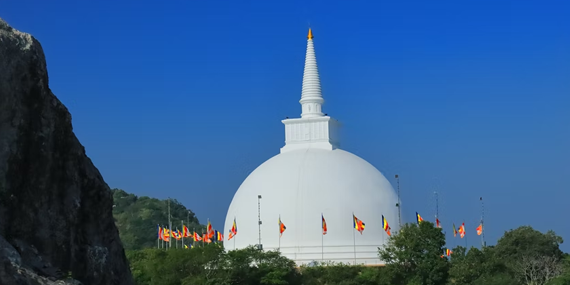

Mihintale is a high summit in Sri Lanka near the city of Anuradhapura. Sri Lankans say it was the setting where a meeting between Buddhist monk Mahinda and King Devanampiyatissa happened that officially established Buddhism in the country. It is now a pilgrimage spot with a number of religious monuments and abandoned buildings making it one of the top places to visit in Anuradhapura for pilgrims and cultural enthusiasts.

King Sena II is credited with the construction of the ancient hospital's ruins (853-887 AD). However, it is thought that a hospital existed at Mihintale before the construction of this structure. The hospital's inner chamber is focused around a Buddha Shrine. The southern wing is where the entrance of the hospital complex is located. The front door leads to a square open-air patio. A square tank built of stone slabs is located on the right side of the room, indicating that it was the hospital's Janthagharaya (hot water and steam bath). On the left, there are two rooms. The pharmaceutical shop is the first and smaller room, while the Dana Shalawa is the larger area (refectory). Out in the open, on the outskirts of the court a massive grinding stone, similar to Kurahan Gala (quern), has been identified. This was most likely used to grind medicine for patients.

The Kuttam Pokuna (Twin Ponds/Pools) are a pair of pools and is one of the outstanding examples of bathing tanks or pools in ancient Sri Lanka. The Sinhalese erected the aforementioned pair of lakes in the ancient kingdom of Anuradhapura. These are considered one of the ancient Sinhalese's most significant achievements in the field of hydrological engineering, and is also an excellent specimen of remarkable architectural and artistic works.
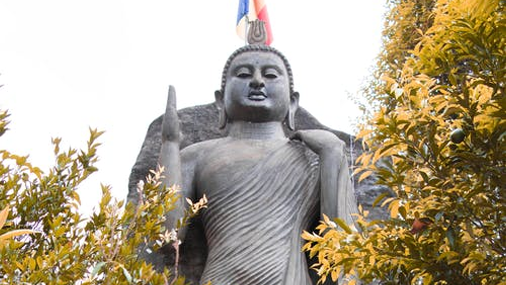

The Avukana statue, located near Kekirawa in North Central Sri Lanka, is a standing Buddha statue. The monument was carved out of a massive granite rock face in the 5th century and is more than 46 feet (14 m) tall. It portrays a variant of the Abhaya mudra, and the intricately carved robe is worn close to the body. It may have been built as a result of a rivalry between a master and a pupil during Dhatusena's reign. One of the outstanding instances of a standing statue erected in ancient Sri Lanka is the Avukana statue. It is now a well-known tourist destination.

The twin reservoir complex Kala Wewa, established by King Datusena in 460 A.D., has a capacity of 123 million cubic meters. A stone-built spillway and three main sluices have made this reservoir complex easier to manage.
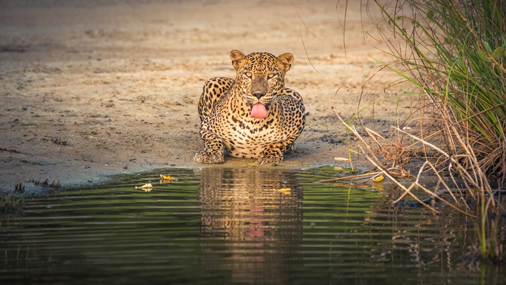

Wilpattu National Park (Willu-pattu; Land of Lakes) is a national park on Sri Lanka's island of Lanka. The presence of "Willus" (natural lakes) - natural, sand-rimmed water basins or depressions that fill with rains - is a distinctive characteristic of this park. Located on Sri Lanka's northwest coast lowland dry zone, the park is 30 kilometers (19 miles) west of Anuradhapura and 26 kilometers (16 miles) north of Puttalam (about 180 kilometers (110 miles) north of Colombo).
The park covers 1,317 square kilometers (508 square miles) (131, 693 hectares) and rises to a height of 0–152 meters (0–499 feet) above sea level. Wilpattu has over a hundred and six lakes (Willu) and tanks scattered out around the island.Wilpattu National Park is Sri Lanka's largest and oldest national park and is one of the best national parks in the world because of its leopard population (Panthera pardus kotiya). The Wilderness and Wildlife Conservation Trust performed a remote camera survey in Wilpattu from July to October 2015. In the examined area, a total of 49 individual leopards were photographed, with the core area density falling somewhere between Yala National Park's Block I and Horton Plains National Park.
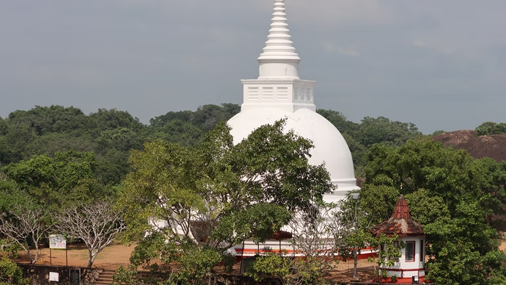

Huge stones and dense forest cover now surround the Thanthirimale Rajamaha Viharaya. Although one can only speculate as to what the monastery looked like over 2300 years ago, tranquillity and serenity still reign. Thanthirimale Rajamaha Viharaya, built in the Third Century BC and used by King Devanampiyatissa as a one-day stop for Arahanth Theri Sangamitta on her route to Anuradhapura, appears to have grown from a modest temple to a huge monastery by the end of the Anuradhapura period. At first, Thanthirimale was not Thanthirimale. Upatissa, a minister of King Vijaya, was the first to civilize the territory, which was encircled by Malwatu Oya and Kanadara Oya by three sides to build his future town then named Upastissa Gama.
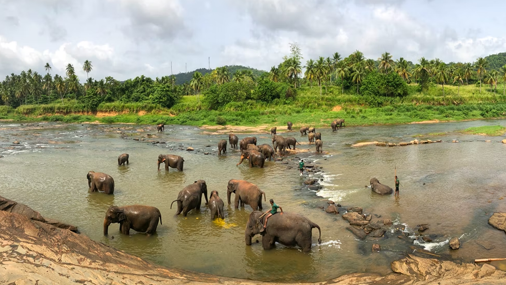

This massive man-made pond can be found near Lankaramaya. This structure has a length of 159 meters, a width of 52.7 meters, and a depth of 9.5 meters, with a capacity of 75,000 cubic meters of water.
The water for this pond comes from the Periyamkulama Tank via a network of underground canals, and some of the water lines made of stone blocks can still be seen.
After a particularly heavy rainy season in 1982, you could see water flowing through these inlets from the Periyamkulama tank, despite the fact that these underground channels have been in use for hundreds of years.
This tank was most likely used by the monks of the Abayagiri monastery, which had over 5,000 priests.

The historic Magul Uyana is housed in Ranmasu Uyana, a park in Sri Lanka. In the old sacred city of Anuradhapura, Sri Lanka, it is adjacent to Isurumuni Vihara and Tissa Wewa. It covers around 40 acres and is a well-known example of pre-Christian Sri Lankan garden architecture.

The Abhayagiriya Museum is housed within the old Abhayagiriya monastery complex in Anuradhapura. It was first shown to the public on June 13, 1992. The museum was built with financial assistance from the People's Republic of China and was designed in the style of a historic Panchavasa monastery. The Abhayagiriya Museum is named for Ven. Kupikkala Mahatissa, the first incumbent of the Abhayagiri Maha Vihara, and Ven. Fa-Xian, a Chinese Buddhist monk who studied Buddhism at the Abhayagiri Maha Vihara from 411 to 412 AD. It is centered on the archaeological site of Abhayagiriya.
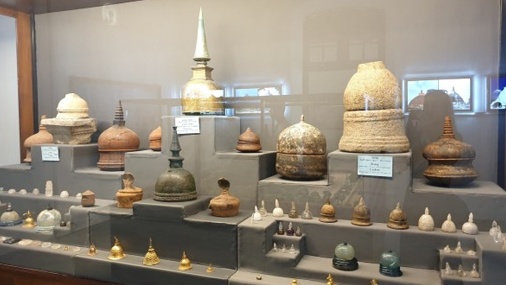

One of Sri Lanka's archaeological museums is the Anuradhapura Archaeological Museum (also known as Puravidu Bhavana). It is located between the Brazon Palace and Ruwanwelisaya in the historic kachcheri structure. Dr. Senarath Paranavithana was the driving force behind the museum's creation in 1947. The National Museum of the Department of Archaeology of Sri Lanka has been planned for the Anuradhapura Archaeological Museum, which is one of the oldest museums in the Cultural Triangle area.
Antiquities discovered in various parts of Sri Lanka are shown in the museum. Buddha statues, inscriptions, drawings, puppets, coins, jewelry, beads, and other assorted items are examples. A model of the Thuparamaya Vatadage and a relic chamber found at Mihintale Kantaka Chetiya Dagoba are among the antiquities.
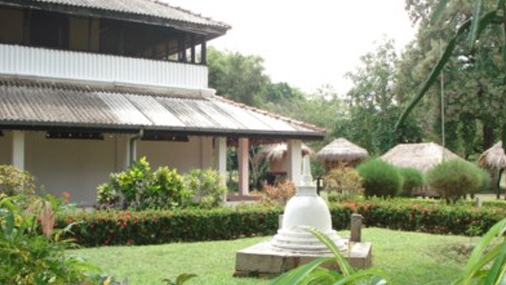

Anuradhapura Folk Museum is a Sri Lankan folk museum. It is close to the Archaeological Museum of Anuradhapura. On August 22, 1971, the museum opened its doors
The museum's purpose is to display things that are utilized by Sri Lanka's folk community and illustrate the rural peasantry's lifestyle as it transitions to modern style. The folk museum houses a wide range of traditional things, including gardening implements, household utensils, medical equipment, musical instruments, and so on.
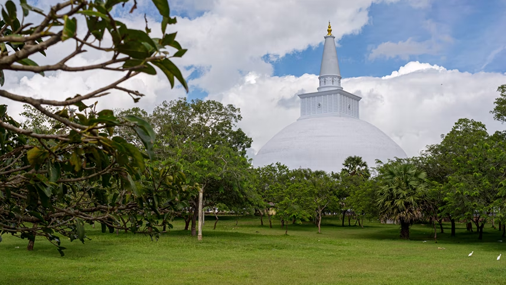

The Mirisaweti Stupa is a monument structure, also known as a stupa, in Sri Lanka's ancient city of Anuradhapura. After defeating King Elara, King Dutugamunu built the Mirisaveti Stupa. He had gone to Tissa Wewa for a bath after depositing the Buddha relics in the sceptre, leaving the sceptre there.

This is thought to be the entrance to the pathway to outer space, and it dates back to 5000 BC. It is thought to represent a link between intelligent alien species and humanity. This carving comprises various symbols, and similar carvings can also be seen in stargate charts at Abu Ghurab, Egypt, and 'the gate route to the gods,' Peru, both of which are said to be linked to aliens.

A massive new stupa, the Sandahiru Seya, is rising on the south side of Anuradhapura, two thousand years after the first of the great dagobas was built, commissioned by President Rajapaksa in 2010. It will eventually rise above the ancient dagobas of Jetavanarama and Abhayagiri, reaching a height of 85 meters and a circumference of 244 meters (but will not surpass their original heights). Sandahiru Seya is being built with about 30 million bricks and will be plastered and whitewashed once complete. Surprisingly, this is just one of nine new stupas that the president has ordered: "in recognition of the great service done by the armed forces and police in defeating terrorism and bringing enduring peace to the country." Some, however, have objected to the notion of dedicating a Buddhist monument to the military's activities in Sri Lanka.

Vessagiri, also known as Issarasamanarama, is an old Buddhist woodland monastery found within the remains of Anuradhapura, one of Sri Lanka's historic capitals. It's about a half-mile south of Isurumuniya, nestled among stones. The site was founded during the time of King Devanampiya Tissa (mid-3rd century BC) and expanded during the reign of King Kasyapa (473 - 491 AD) to accommodate roughly 500 monks. The Vessagiri monks lived in rock shelters made from local materials quarried on site. The visitor today only sees the bare stones - and not all of them, because most of the rock was removed and reused elsewhere.

The reservoir is a man-made tank in Anuradhapura, Sri Lanka, that is one of the country's eight World Heritage Sites. Because of its proximity to the city of Anuradhapura, the tank was given the name 'Nuwara wewa' in Sinhalese, which means 'tank in the city.' It is one of the country's top ten largest man-made tanks, holding 150 million cubic meters of water and encompassing 4000 hectares with a 4-kilometre embankment. It serves the people by providing water for agricultural and human activities in the Anuradhapura area both now and in the past.

Ritigala is a 1,528-hectare tight nature reserve (3,780 acres). It was formed on November 7, 1941 (Gazette Notification No. 8809), and is jointly managed by the Sri Lankan Department of Wildlife and the Sri Lankan Forest Department.

Ritigala mountain is made up of four summits that rise abruptly from the plain below. Maha-Degala Gorge divides the mountain into northern and southern pieces, making it 6.5 kilometers long. In the southern block, Ritigala Kanda is the tallest mountain.
Ritigala is the highest peak in northern Sri Lanka, rising 766 meters (2,513 feet) above sea level and 600 meters (2,000 feet) above the surrounding plains. The present name Ritigala is derived from the Mahavamsa's ancient name Ariha Pabbata (Dreadful Mountain).
It has a higher elevation than Sigiriya, Dambulla, and Mihintale.


The government declared the wilderness of Kalawewa and Balaluwewa a sanctuary, adding another national park to Sri Lanka's protected territories.
King Dhatusena, who controlled the country in the fifth century, built the Kalawewa reservoir. He also constructed the Balaluwewa and joined them to form a massive tank for ancient agriculture.
These tanks have been refurbished and now keep water throughout the year, attracting wildlife.

Nachchduwa is one of the historic city of Anuradhapura's greatest man-made lakes, and it's about 1.5 kilometers from the main route between Galkulama and Anuradhapura. It is a beautiful and soothing vista that many tourists to the ancient city of Anuradhapura hear about as a must-see attraction.